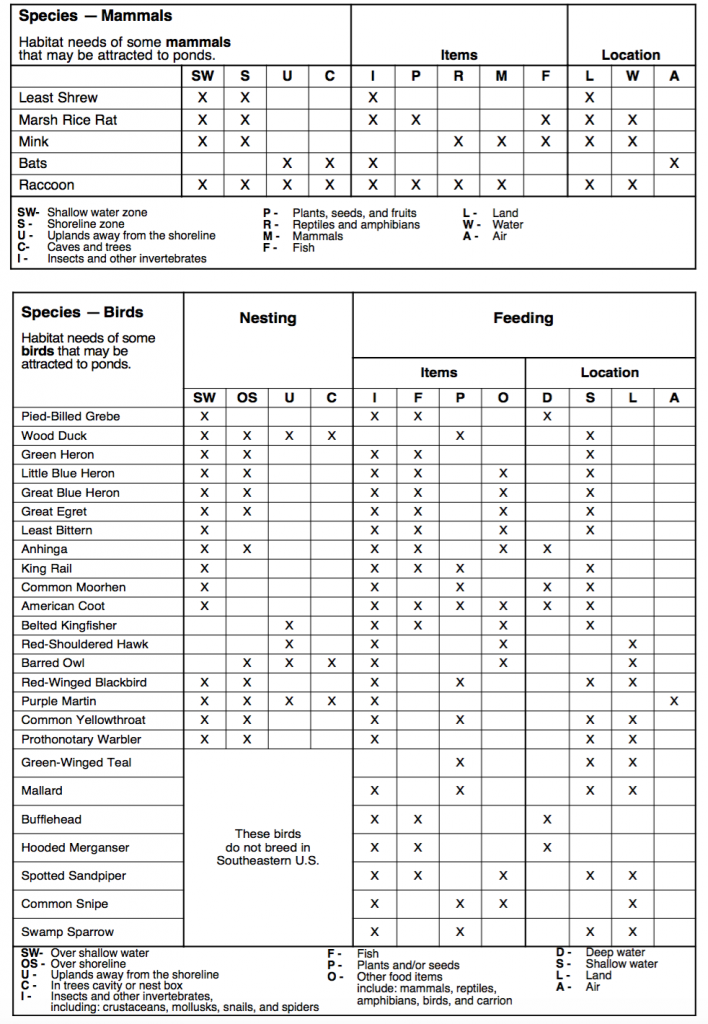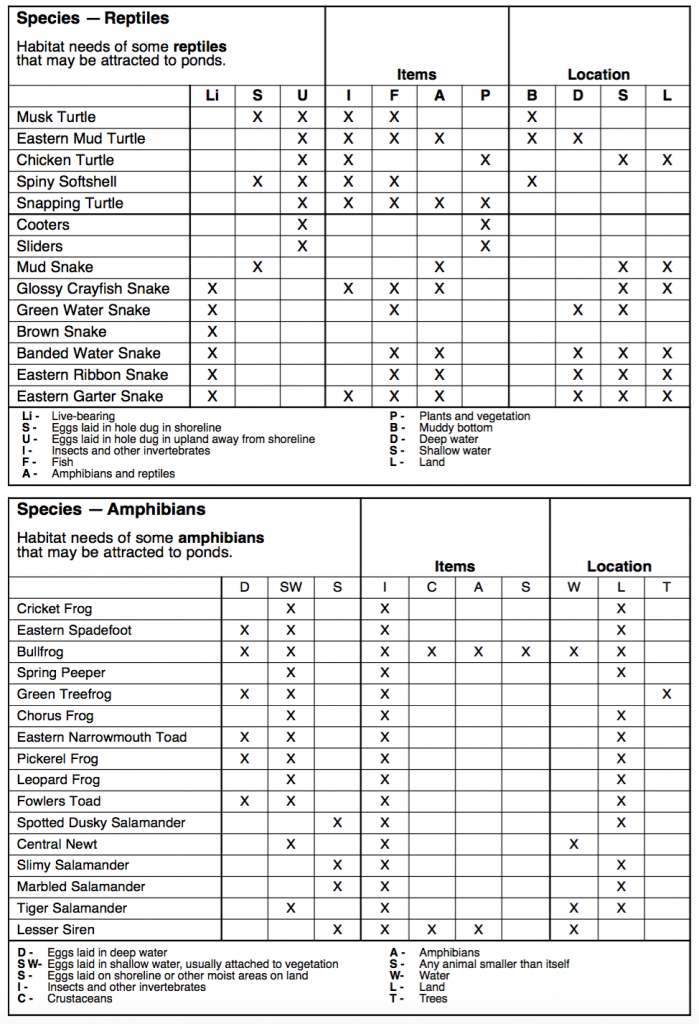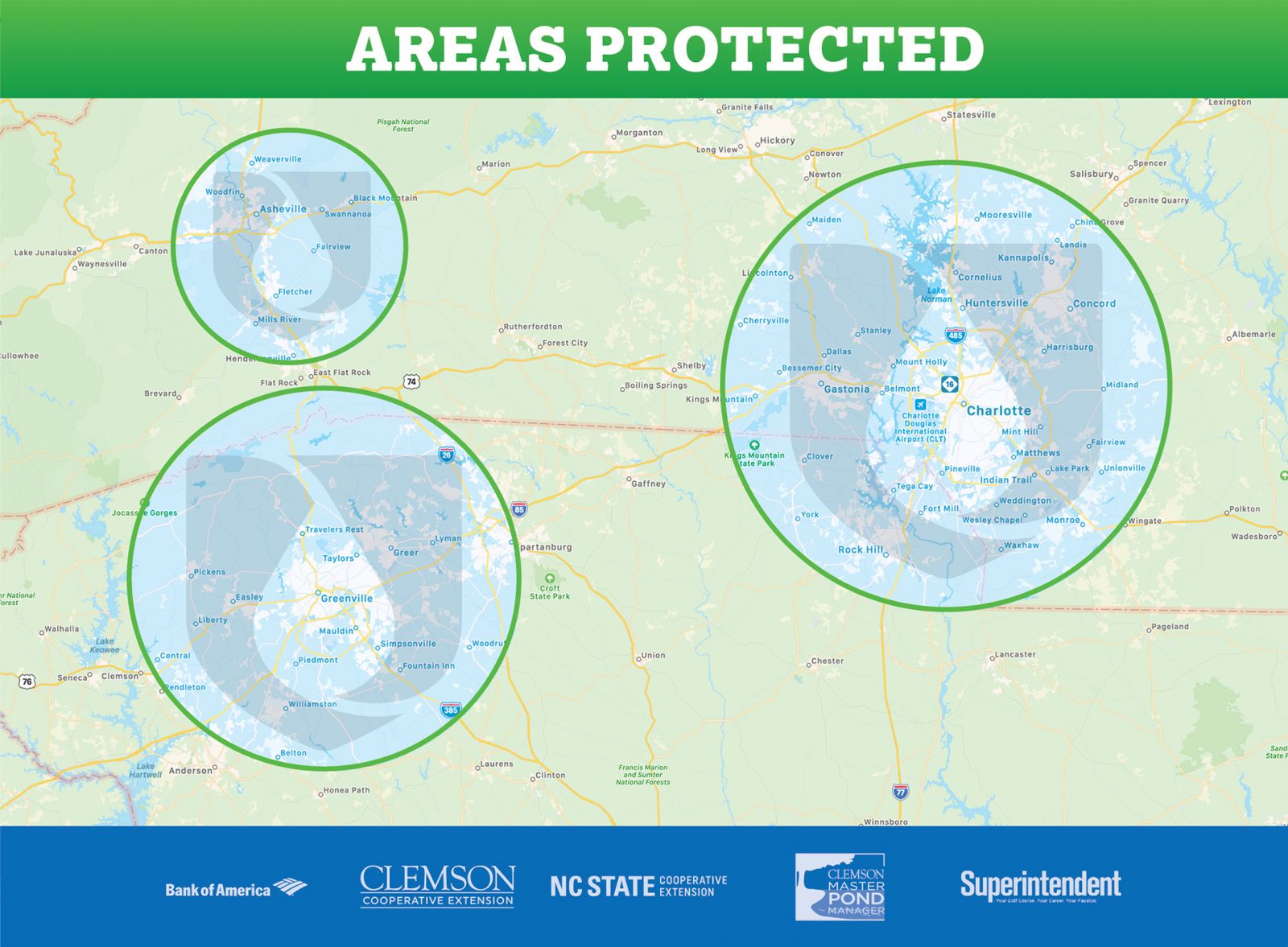A friendly turtle, a duck, and a dangerous snake all need your stormwater pond for survival. Like most things in life it all revolves around water. It is hard to believe how many creatures need a pond for reproduction, protection, and to provide the food they eat.
We recently stumbled across these charts below from the University of Florida that show a unique perspective of the cycle of life created with a pond. (Stormwater Ponds: A Citizens Guide to their Purpose & Management; University of Florida)
Diagram from Stormwater Ponds: A Citizen’s Guide to their Purpose & Management
Diagram from Stormwater Ponds: A Citizen’s Guide to their Purpose and Management[/caption]
What You Can Do TODAY?
❧ Take pond information to neighbors to educate them about how stormwater ponds work.
❧ Pick up trash.
❧ Take pictures of your pond; take pictures of good areas as well as ugly areas and any trash. Take them with you when you talk to neighbors about pond improvements and pollution prevention.
❧ Remind neighbors to fertilize wisely, with slow release nitrogen, two times a year.
- ❧ Remind neighbors to keep a “fertilizer- free” zone around the pond.
- ❧ Remind neighbors to keep grass clippings and leaves out of storm drains.
- ❧ Learn to identify the aquatic plants in your pond.
- ❧ Ask your neighbors to join you in forming a quarterly pond maintenance group.
- ❧ Be sure to include kids in your educational, planning, and work day efforts; they can be a big help, and some- day they might have a pond to care for!
- ❧ Clean up pet manure to keep excess “nutrients” and disease-causing micro- organisms away from your pond.
- ❧ Practice organic gardening techniques using non-toxic products.
- ❧ Call your local government building department and ask for an aerial photograph of your neighborhood including the pond area. Aerials are usually of one square mile, at a scale of 1:200 feet; sometimes they call them “blue-line aerials.” Looking at the aerial, determine how your pond connects with the surrounding area:
- Does your pond drain to a nearby wetland or creek?
- Is your pond part of a “greenway” that wildlife depends upon?
- Does your pond connect to another pond in the neighborhood?
- Are there any businesses in your pond’s drainage basin?
- The building department should also have records of your neighborhood drainage plan, which will tell you exactly which houses are in your pond’s “drainage basin.” Request a copy of this plan, and ask for help interpreting the plan.
-
- ❧ Ask your neighbors to join you in a pond walk; complete a pond inspection form and pond sketch as you walk around the pond.
- ❧ Identify two key nuisance plants in your pond that everyone in your pond group will learn to identify and will remove from the pond area every time they see it growing there.
- ❧ Schedule four quarterly work days, and tell everyone in your pond group to mark their calendars now!
- ❧ Review your pond inspection form and use your notes to plan the activities for the next pond work day.
- ❧ Talk with a local native aquatic plant nursery and ask for prices on these plants:
- Saururus cernuus, lizard’s tail
- Iris virginica, blue flag iris
- Spartina bakeri, sand cordgrass
- Canna flacida, golden canna
- Sagittaria lancifolia, duck potato
- Sagittaria graminea
- Pontederia spp., pickerelweed
- Juncus effusus, soft rush
- Myrica cerifera, wax myrtle
- Cephalanthus occidentalis, button bush
- Quercus laurifolia, laurel oak
- Acer rubrum, Red Maple
- Taxodium spp., cypress
- Celtis laevigata, sugarberry
- Ulmus americana, elm
- Liquidambar styraciflua, sweetgum
- Except for the trees and shrubs, ask for bare-root prices; liners are too small, and quarts or gallons leave you with a lot of pots to deal with! It is easy and eco- nomical to use bare-root plants when buying aquatic plants.
- Have a meeting with your neighbors to discuss a planting plan: select plants, set a budget, set a pond planting date. Get a storm drain marking kit for your neighborhood storm drains. This is a great activity for kids! The markers have pollution prevention messages on them to discourage dumping in the storm drains. What do you think an HOA can do to help inform the neighborhood better their pond?
Now serving Greenville SC, Spartanburg SC, Asheville NC, Charlotte NC, Winston-Salem NC, & Greensboro NC areas.
Get started. Become a member today!





